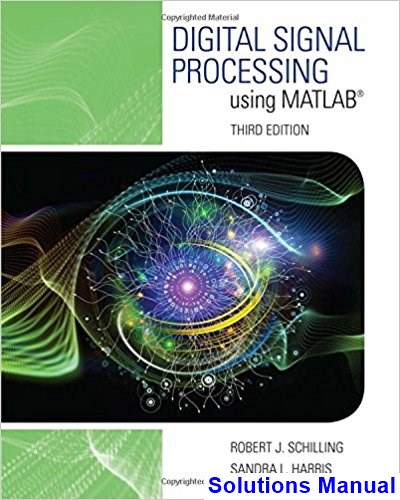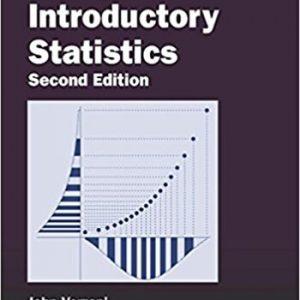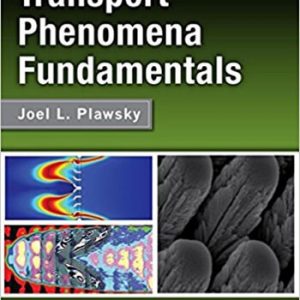This is completed downloadable of Digital Signal Processing using MATLAB 3rd Edition Schilling Solutions Manual

Product Details:
- ISBN-10 : 1305635191
- ISBN-13 : 978-1305635197
- Author: Robert J. Schilling, Sandra L. Harris
Focus on the development, implementation, and application of modern DSP techniques with DIGITAL SIGNAL PROCESSING USING MATLAB, 3E. Written in an engaging, informal style, this edition immediately captures your attention and encourages you to explore each critical topic. Every chapter starts with a motivational section that highlights practical examples and challenges that you can solve using techniques covered in the chapter. Each chapter concludes with a detailed case study example, a chapter summary with learning outcomes, and practical homework problems cross-referenced to specific chapter sections for your convenience. DSP Companion software accompanies each book to enable further investigation. The DSP Companion software operates with MATLAB and provides intriguing demonstrations as well as interactive explorations of analysis and design concepts.
Table of Content:
- Part 1: Signal and System Analysis
- Ch 1: Signal Processing
- Ch 1: Chapter Topics
- 1.1: Motivation
- 1.2: Signals and Systems
- 1.3: Sampling of Continuous-time Signals
- 1.4: Reconstruction of Continuous-time Signals
- 1.5: Prefilters and Postfilters
- 1.6: DAC and ADC Circuits
- 1.7: DSP Companion
- 1.8: GUI Modules and Case Studies
- 1.9: Chapter Summary
- 1.10: Problems
- Ch 2: Discrete-Time Systems in the Time Domain
- Ch 2: Chapter Topics
- 2.1: Motivation
- 2.2: Discrete-Time Signals
- 2.3: Discrete-Time Systems
- 2.4: Difference Equations
- 2.5: Block Diagrams
- 2.6: The Impulse Response
- 2.7: Convolution
- 2.8: Correlation
- 2.9: Stability in the Time Domain
- 2.10: GUI Modules and Case Studies
- 2.11: Chapter Summary
- 2.12: Problems
- Ch 3: Discrete-Time Systems in the Frequency Domain
- Ch 3: Chapter Topics
- 3.1: Motivation
- 3.2: Z-Transform Pairs
- 3.3: Z-Transform Properties
- 3.4: Inverse Z-Transform
- 3.5: Transfer Functions
- 3.6: Signal Flow Graphs
- 3.7: Stability in the Frequency Domain
- 3.8: Frequency Response
- 3.9: System Identification
- 3.10: GUI Modules and Case Studies
- 3.11: Chapter Summary
- 3.12: Problems
- Ch 4: Fourier Transforms and Spectral Analysis
- Ch 4: Chapter Topics
- 4.1: Motivation
- 4.2: Discrete-Time Fourier Transform (DTFT)
- 4.3: Discrete Fourier Transform (DFT)
- 4.4: Fast Fourier Transform (FFT)
- 4.5: Fast Convolution and Correlation
- 4.6: White Noise
- 4.7: Auto-Correlation
- 4.8: Zero Padding and Spectral Resolution
- 4.9: The Spectrogram
- 4.10: Power Density Spectrum Estimation
- 4.11: GUI Modules and Case Studies
- 4.12: Chapter Summary
- 4.13: Problems
- Part 2: Filter Design
- Ch 5: Filter Types and Characteristics
- Ch 5: Chapter Topics
- 5.1: Motivation
- 5.2: Frequency-Selective Filters
- 5.3: Linear-Phase and Zero-Phase Filters
- 5.4: Minimum-Phase and Allpass Filters
- 5.5: Quadrature Filters
- 5.6: Notch Filters and Resonators
- 5.7: Narrowband Filters and Filter Banks
- 5.8: Adaptive Filters
- 5.9: GUI Modules and Case Studies
- 5.10: Chapter Summary
- 5.11: Problems
- Ch 6: FIR Filter Design
- Ch 6: Chapter Topics
- 6.1: Motivation
- 6.2: Windowing Method
- 6.3: Frequency-Sampling Method
- 6.4: Least-Squares Method
- 6.5: Optimal Equiripple Filter Design
- 6.6: Differentiators and Hilbert Transformers
- 6.7: Quadrature Filter Design
- 6.8: Filter Realization Structures
- 6.9: Finite Word Length Effects
- 6.10: GUI Modules and Case Studies
- 6.11: Chapter Summary
- 6.12: Problems
- Ch 7: IIR Filter Design
- Ch 7: Chapter Topics
- 7.1: Motivation
- 7.2: Filter Design by Pole-Zero Placement
- 7.3: Filter Design Parameters
- 7.4: Classical Analog Filters
- 7.5: Bilinear Transformation Method
- 7.6: Frequency Transformations
- 7.7: Filter Realization Structures
- 7.8: Finite Word Length Effects
- 7.9: GUI Modules and Case Studies
- 7.10: Chapter Summary
- 7.11: Problems
- Part 3: Advanced Signal Processing
- Ch 8: Multirate Signal Processing
- Ch 8: Chapter Topics
- 8.1: Motivation
- 8.2: Integer Sampling Rate Converters
- 8.3: Rational Sampling Rate Converters
- 8.4: Polyphase Filters
- 8.5: Narrowband Filters
- 8.6: Filter Banks
- 8.7: Perfect Reconstruction Filter Banks
- 8.8: Transmultiplexors
- 8.9: Oversampled A-to-D Converters
- 8.10: Oversampled D-to-A Converters
- 8.11: GUI Modules and Case Studies
- 8.12: Chapter Summary
- 8.13: Problems
- Ch 9: Adaptive Signal Processing
- Ch 9: Chapter Topics
- 9.1: Motivation
- 9.2: Mean Square Error
- 9.3: Least Mean Square (LMS) Method
- 9.4: Performance Analysis of LMS Method
- 9.5: Modified LMS Methods
- 9.6: Adaptive Filter Design with Pseudo-Filters
- 9.7: Recursive Least Squares (RLS) Method
- 9.8: Active Noise Control
- 9.9: Adaptive Function Approximation
- 9.10: Nonlinear System Identification (NLMS)
- 9.11: GUI Modules and Case Studies
- 9.12: Chapter Summary
- 9.13: Problems
- References and Further Reading
- Appendix 1: Transform Tables
- Appendix 2: Mathematical Identities
- Index





